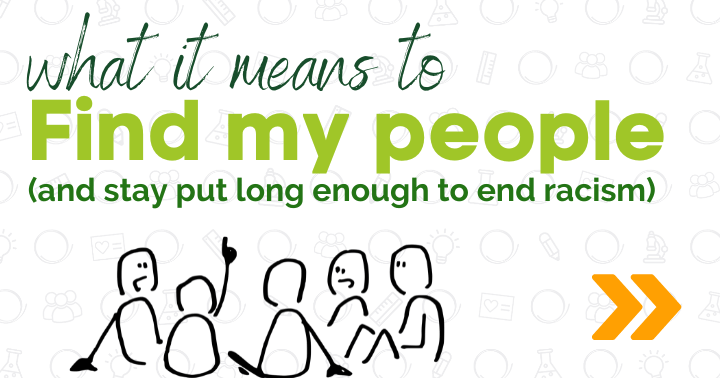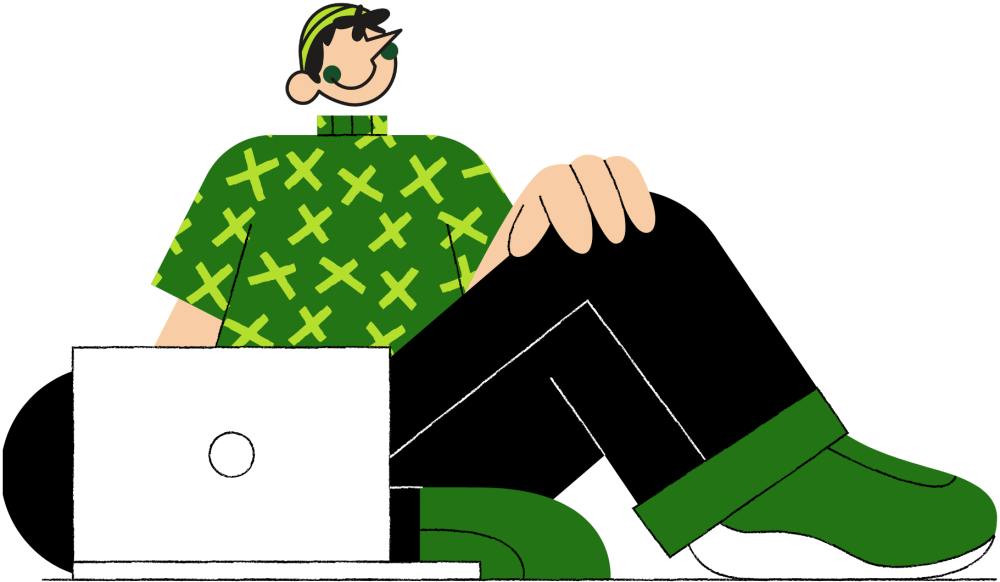Many people and organizations are considering joining or starting a white affinity group. Yet, there are many questions about what those spaces are and are not. The risk is that if we don’t get some clarity, white affinity spaces could become the next thing that white people do because it’s what we think we should. Our team has been hosting these spaces since 2016, and we’ve learned a lot and want to pass along that learning to you in the hope that it inspires and attunes all of us to what is possible when white people gather and stay put with each other.
Before I begin, I want to acknowledge the Cowlitz, Columbia, Grand Ronde, and Siletz people as the stewards of the area where I live and thank them for their leadership. I also want to acknowledge the people who have cultivated me. I would not be here without my family – by birth and by love – and the wisdom and leadership of Jomo Greenidge, who transitioned to ancestor in December 2020, as well as countless people who have challenged, strengthened, guided, invited, and loved me to a more whole version of myself. I honor you all.
To share our ideas about white affinity, I also need to highlight the developing nature of these ideas. Our beliefs today are different from the past and will likely change again.
I keep Adam Grant in mind as he says, “When you think like a scientist, you favor humility over pride and curiosity over conviction. You look for reasons why you might be wrong, not just reasons why you must be right.”
I’ve spent so much time championing white affinity because it has changed me, and I’ve witnessed it changing many white people. But when we started asking, “How is white affinity wrong,” we began to locate the potholes that had been there all along, which allowed us to imagine what would fill them, test our ideas, and iterate more quickly.
Let’s zoom out.
Our north star is ending racism in our lifetime.
If that phrase is troubling you, will you do me a favor? Will you stick with me a bit longer? I believe words create worlds, and I’m experimenting with the idea that if I keep saying things like “racism will never end,” maybe I’m creating a world where it can’t. What if there were more ways to talk about racism than how we have been?
I often say, “I wouldn’t put it past me to be wrong about this.” The same is true now. The ways we think and talk about racism may not be the final toolset that will lead to its end, but I promise you that I will keep trying.
Now, let’s zoom back in.
Names are important, and while I’m not trying to get caught up arguing over words, we find ourselves moving away from calling these spaces white affinity because the name lacks truth or clarity.
The truth is most white people are unsettled in a white affinity group.
We don’t enjoy being together. We do all kinds of performing, pretending, soap-boxing, finger-wagging, 1-2-3-not-it-ing, and ultimately, can’t wait to leave one another for imaginary greener pastures somewhere else and with someone else. We stubbornly keep thinking that the “real work” will start when we force everyone into one room as if this is hash-outable (Hint: it’s not, and in many cases, this approach causes more harm).
We don’t even notice the rigid, reflexive patterns at play because we haven’t begun to face what’s propelling them.
But we also must admit that our family, friends, neighborhoods, churches, and workplaces are saturated with white people—prompting us to ask if our uneasiness has more to do with being among white people or talking about racism among white people.
As we seek to tell a more expansive truth, we also need clarity about the spaces we are co-creating with each other. Do we gather simply in pursuit of affinity for each other? No.
So, for now, we are calling these spaces a white community of practice because this name helps us gain important insights.
The first insight is that white people must learn to be part of a community. George Hrbek says, “It’s in the context of community that white people find the courage to be who they want to be,” and Ben McBride says, “The wrong first question is what do we need to do; the right first question is who do we need to become.”
More often than not, white people in an affinity space maintain the dominating patterns of racism. When we prioritize relating, we can begin to loosen from how we run dominating patterns on ourselves, each other, people targeted by racism, and the planet.
Being part of a community challenges us to contribute, tend, practice, heal, co-create, and so much more; all things we never get around to when we are busy doing everything we can to earn a trophy that doesn’t exist.
The second insight comes from the last word…practice. Practicing liberation has helped me give up checkboxes and cement shoes because it isn’t about performance or perfection.
Where am I going with all of this?
I think an essential metric for white communities of practice that want to end racism is:
Are white people loosening dominating patterns and strengthening relating patterns?
Let’s unpack that a bit.
We define dominating patterns as the predictable life-destroying behaviors that show up in a bell curve for people who are the non-target of a system of oppression.
Non-targets are white (racism), male (sexism), owning class (classism), gentiles (antisemitism), etc. Make sense?
Many lists exist, but these are the dominating patterns under our microscope at the moment:
Disconnected
Superior
Oblivious
Hoarding
Rigid
Rescuing
Defensive
Avoidant
Impatient
Helpless
Policing
Fearful
Inhuman
Conversely, we define the correlating relating patterns as the predictable life-affirming behaviors that show up in a bell curve for people who seek to live harmoniously with all living beings. They are:
Connected
Humble
Aware
Sharing
Expansive
Healing
Collaborative
Accountable
Restful
Contributing
Curious
Courageous
Playful
It’s not enough to ask, “Am I loosening from dominating patterns and strengthening relating patterns?” I also need to ask where and how much.
“Where” could be with me, fellow white people, people targeted by racism (or any system of oppression where I am the non-target), or any living being on the planet.
“How much” tracks the reach of my efforts.
Our workbook (coming soon!) has examples and space to reflect on this for yourself.
In the meantime, what if white people asked themselves daily:
Where are dominating patterns showing up, and what would it take to loosen them?
Where are relating patterns showing up, and how can I strengthen them?
As these questions infuse our lives and white communities of practice, we see a greater capacity to focus on who we need to become. Dominating patterns still show up, sadly, but when we share a vision for who we could become, it’s so much easier to say, “Oops, that’s not who we want to become.” giving us the pause we need to ask, “What other possibilities do we have?”
We believe that non-targets have the greatest responsibility to end systems of oppression.
If you think you might agree, it means that white communities of practice need to stay focused on ending racism. When you gather in a white community of practice, keep the focus on race but be curious about the distinct experiences of our young, working class, women, Jews, disabled, queer, and elder people. As the targets of oppression, their experiences will help us generate a more expansive way of relating with one another within a white community of practice.
I hope this has been helpful and that you are leaving here feeling inspired and ready to consider how a white community of practice might support your own journey or those you work or live among. As always, we’d love to hear what this brings up for you.
no one gets here alone, and I am no different
The brilliant beings who have contributed to these ideas are Jomo Greenidge; fungi; Wahinkpe Topa (Four Arrows) and Darica Narvaez in Restoring the Kinship Worldview; Nanci Luna Jiménez; Jeff Duncan-Andrade; Shawn A. Ginwright in Four Pivots; Ben McBride; George Hrbek by way of Lynn Burnett; Adam Grant and countless more.


